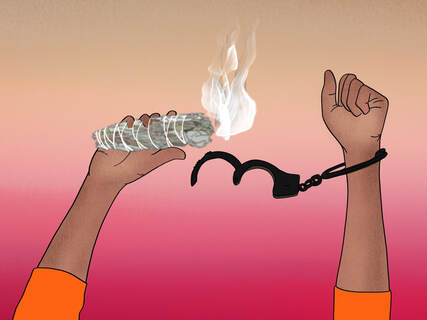Community of Practice
|
We are working to address the disparate treatment of Native youth and develop alternatives to detention for Native youth who come into contact with the juvenile justice system.
We have convened Native Nation leaders, judges, staff and youth justice experts through our Indian Country Youth Justice Community of Practice to:
If you would like more information about participating in our Indian Country Youth Justice Community of Practice, send us an email at [email protected]. |
Healing Native Youth Through Youth Justice Reform
|
|
|
In partnership with the Annie E. Casey Foundation, the Association is working to address how state and local justice systems identify Native youth, and collaborate and consult with Native Nations to provide support and culturally appropriate programming. The Association surveyed Annie E. Casey Foundation Juvenile Detention Alternative Initiative (JDAI) sites, which were created to provide alternatives to detention, and found that the majority of those sites had not developed a reliable process for identifying Native youth, and almost none of the sites reached out to Native youth families or their Native Nations to determine if there were culturally appropriate services available.
Today, the Association continues its efforts with the Annie E. Casey Foundation to train state and local youth justice workers how best to work with Native youth and their Nations to provide the best outcomes for our youth. Read why identifying Native youth and working with Native Nations is so important in the article below, or download here. If you would like to request training and technical assistance to better understand these issues and develop strategies for working with Native youth and their Nations, fill out our form to request more information.
Read why identifying Native youth and working with Native Nations is so important in the article below, or download here.
Today, the Association continues its efforts with the Annie E. Casey Foundation to train state and local youth justice workers how best to work with Native youth and their Nations to provide the best outcomes for our youth. Read why identifying Native youth and working with Native Nations is so important in the article below, or download here. If you would like to request training and technical assistance to better understand these issues and develop strategies for working with Native youth and their Nations, fill out our form to request more information.
Read why identifying Native youth and working with Native Nations is so important in the article below, or download here.
Your browser does not support viewing this document. Click here to download the document.
Juvenile Detention Alternatives Initiative:
Examining How JDAI Sites Interact with Native Youth and Tribes
|
The rate of incarceration for Native youth is higher than any other racial or ethnic group. Scholars have found that the disproportionate rates are likely linked to institutional racism, coupled with historic intergenerational trauma. The Association on American Indian Affairs (the Association) has recently published its report, Juvenile Detention Alternatives Initiative: Examining How JDAI Sites Interact with Native Youth and Tribes, which analyzes how JDAI sites interact with Native youth and Tribes and makes recommendations about how JDAI sites can improve their efforts to find culturally appropriate alternatives to incarceration for Native youth and collaborate with Tribes.
The study identified two significant findings. First, the majority of JDAI sites who responded to the survey had not developed a reliable process for identifying and collecting data on Native youth. Many of the sites left it to the youth to self-identify or relied on the unilateral determination of a juvenile justice case worker or police officer to identify a youth as Native American. This is problematic as many Native youth do not want to alert their Tribal communities because of feelings of embarrassment or shame. Moreover, a caseworker may misunderstand that Native Americans vary widely in appearance and may mistake a Native youth for Hispanic, black or white. Second, the study revealed that the majority of JDAI sites surveyed were not reaching out to families or Tribal communities to collect information on a youth’s status as a citizen or member of a Tribe, were not providing notice to the Tribe of the youth’s offenses, nor determining whether there were culturally appropriate services available to Native youth. Tribes are sovereign nations, often with their own culturally appropriate services, including alternatives to detention. |
The Association found emerging best practices within some JDAI sites in Arizona, Montana, New Mexico and Washington. These JDAI sites are developing programs that promote collaboration with Tribes, including changes to state laws and policies, procedures that require information sharing, juvenile code development, at-risk and former offender identification processes, culturally-relevant community service programming and even cultural awareness training for court staff and community partners.
The Association’s report provides quantitative and qualitative proof that though there are a few sites with emerging best practices, generally JDAI sites have not developed consistent and culturally appropriate protocols to collect robust data and connect Native youth to culturally appropriate alternatives to detention — two critical issues of JDAI. The report provides recommendations for JDAI sites including developing protocols to identify Native youth by working with families and Tribes, building relationships with Tribal juvenile justice staff and obtaining training about Tribes in their regions. Below are documents related to Native Youth Justice reform
|











